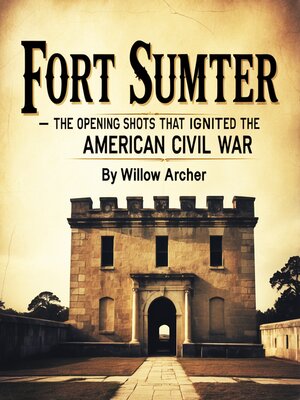Fort Sumter
audiobook (Unabridged) ∣ The Opening Shots That Ignited the American Civil War
By Willow Archer

Sign up to save your library
With an OverDrive account, you can save your favorite libraries for at-a-glance information about availability. Find out more about OverDrive accounts.
Find this title in Libby, the library reading app by OverDrive.



Search for a digital library with this title
Title found at these libraries:
| Library Name | Distance |
|---|---|
| Loading... |
This audiobook is narrated by a digital voice.
In the placid waters of Charleston Harbor, where the Ashley and Cooper Rivers converge before flowing into the Atlantic Ocean, stands a man-made island that would become the most consequential piece of real estate in American history. Fort Sumter, named after Revolutionary War hero Thomas Sumter, began as an ambitious engineering project in the early 19th century, conceived during a time when the young United States was acutely aware of its vulnerability to foreign naval powers.
The fort's origins trace back to the Third System of coastal fortifications, a comprehensive defense program initiated by Congress in 1816 following the War of 1812. The British bombardment of Fort McHenry in Baltimore and their ability to penetrate American coastal defenses had exposed critical weaknesses in the nation's maritime security. Charleston, as one of the South's most important ports and a gateway to the cotton-rich interior, demanded robust protection.
Construction began in 1829 under the supervision of the U.S. Army Corps of Engineers, with Captain Alexander Swift initially overseeing the project. The chosen location was a submerged sandbar in Charleston Harbor, requiring millions of tons of granite from New England to create an artificial island foundation. This massive undertaking would consume over three decades and millions of dollars, making it one of the most expensive military construction projects of the antebellum period.
The design reflected the military engineering principles of the era, calling for a pentagonal masonry fortress capable of mounting 135 guns across three tiers. The walls were designed to be five feet thick at the top and twelve feet thick at the base, constructed of brick and faced with South Carolina gray limestone. The fort was intended to work in conjunction with Fort Moultrie on Sullivan's Island and Castle Pinckney on Shutes Folly Island to create an impregnable triangle of defense protecting Charleston Harbor.







